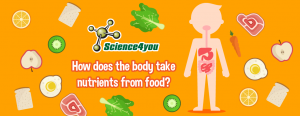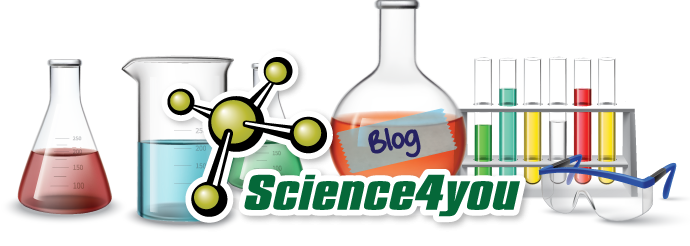
How does the body take nutrients from food?
Everyone needs to eat to perform all functions of living, but have you ever thought how your body gets nutrients from food, little scientist? Do you know what kind of nutrients needs your body and why? Discover it with us!
Eating a wide range of foods that include a variety of nutrients is the easiest way to have a healthy diet. Your body needs each of following nutrients:
- Proteins
- Carbohydrates
- Fats
- Vitamins and minerals
- Water
Proteins provide your body with amino acids. It helps your body build new cells, repair old cells, create hormones and enzymes, and keep your immune system healthy. If there is a lack of protein, your body needs more time to recover from illness and you are more susceptible to get sick in the first placed.
Carbohydrates give your body energy which its used as a fuel before it turns into fat. Fruits, vegetable and lentils are a good source of carbohydrates. Many of them are good sources of fiber.
Fats give your body the fatty acids it needs to grow and to produce new cells and hormones. Fat also helps some vitamins move through your body. Vitamins A, D, E, and K are fat-soluble vitamins, which means they need some fat to be absorbed. They are also stored in the fatty tissues in your body and the liver. Fat also helps protect your organs against trauma.
Vitamins keep your bones strong, your vision clear and sharp, and your skin, nails, and hair healthy and glowing. Vitamins also help your body use energy from the food you eat.
Minerals are chemical elements that help regulate your body’s processes. Potassium, for example, helps your nerves and muscles function. Calcium helps your teeth and bones stay strong. Iron carries oxygen to your cells.
Water is necessary for life, which makes it vital for good health. Water makes up about 50% to 66% of your total body weight. It regulates your temperature, moves nutrients through your body, and gets rid of waste. Breast cancer treatment can sometimes cause diarrhea or vomiting. Losing a lot of fluids plus the chemicals and minerals they contain can lead to dehydration.
The nutrients that food gives you, from vitamins to proteins, have specific functions in the body that keep you healthy and support your body’s systems. Your body absorbs two types of nutrients: macronutrients and micronutrients. The journey of absorption begins with digestion. After food is chewed and broken down by enzymes in your saliva, it travels into your stomach. There, digestion intensifies through the action of hydrochloric acid as well as enzymes like protease (which breaks down protein), lipase (which breaks down lipids or fats) and amylase (which breaks down carbohydrates). There are two primary ways that nutrients cross through the walls of the small intestine and enter the bloodstream: passive diffusion and active transport absorption. It’s a simple process where nutrients move from an area of high concentration (from inside the intestine) to an area of low concentration (the bloodstream). Active transport absorption means that the nutrient requires a helper or carrier molecule to get it through the intestinal wall out into general circulation. But you generally don’t have to worry about absorbing more nutrients than you need. Your body will not absorb more of a given nutrient than it requires. You might absorb from 10 to 90% of a given nutrient from a given food!
From now on, you know all the process of taking nutrients from food by your body. We hope, we satisfied your curiosity, little scientists! Keep tuned to our blog if you want to find out more interesting scientific fact and our latest news!
